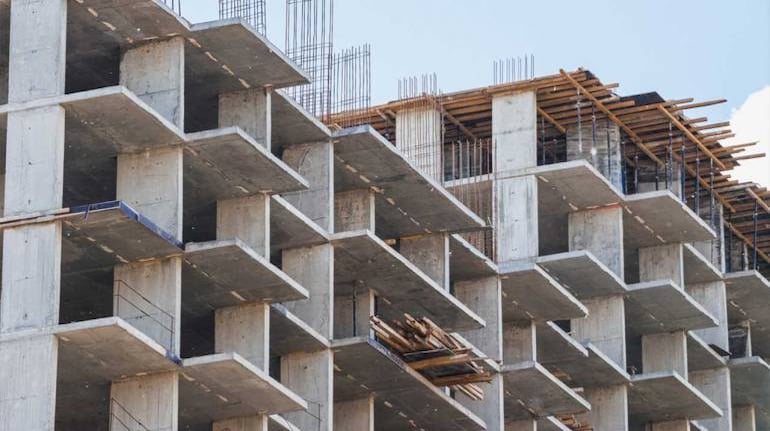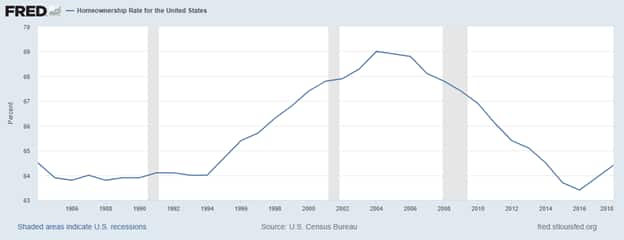



The recent report by the Harsh Vardhan-led committee on developing a housing finance securitisation market is a clear attempt to nudge India towards a more market-based financial system. This follows a previous report on developing a secondary market for corporate loans (see previous piece) is a step in that direction.
So, what is housing finance securitisation?
All financial entities have to deal with asset liability mismatch as their assets are long-term and liabilities short-term. This is even more acute for banks and housing finance companies (HFCs) that offer home loans. Here, typical loans could be up to 30 years whereas liabilities are for 5 years. The liabilities for banks come via deposits which are more stable whereas HFCs rely on borrowings from banks and issue bonds that are less stable.
This is where securitisation comes in, which can help banks and HFCs (originators of loans) address this challenge. The originators either create or sell the loans to a special purpose vehicle (SPV). These loans are polled based on risks and returns and sold to investors as securities -- also called pass through certificates or PTCs. There are other parties such as credit rating agencies, credit enhancers and so on which help in the overall process of securitisation.
One can immediately see that HFCs gain from securitisation as it helps them lighten their loan books and manage asset liability better. In turn, HFCs give more home loans enabling people to buy their own homes.
In fact, it is the very premise of promoting home ownership which led the US government to allow large scale securitisation. The home ownership, which lagged at 64 percent level in 1980s, did improve to 69 percent by the early 2000s. However, post-2008 crisis, the home-ownership has not just declined but had become even lower than 1980’s by 2016. The levels have recovered marginally after 2016.

The origins of 2008 crisis lay in the home loan market. In mid 1990s, rise in house prices coupled with policies promoting home ownership policies made HFCs dole out loans even to borrowers with poor credit scores (subprime), NINJA (No Income, No Job or Asset) and so on.
These poor quality loans when securitised were given much higher credit ratings by the agencies, leading to underpricing of risks. The high-rated securities coupled with higher returns on similar assets drove investors to these securities not just in the US but across Europe.
Once the housing prices started to decline in 2006, the structure first began to creak and then fell like a castle of cards, from US financial markets to ones in Europe and then to the global economy. The point behind this short detour was to suggest that securitisation is no magic bullet and one has to be careful while promoting it as a policy objective.
Coming back to the report, it starts with the same foundation as the one held by US policymakers. Under the ambitious ‘Housing for All’ programme of the government, India needs to build around 8-10 crore houses by 2022.
This target is highly ambitious, given that the current market value of housing in India is estimated at Rs 150 lakh crore and it is like creating the entire current housing market in just three years!
By the end of 2018-19, banks and HFCs combined have home loans outstanding at Rs 20 Lakh crore, accounting for 58 percent and 42 percent, respectively. In 2011, the share of HFCs in home loans was 33 percent, which has steadily increased to 42 percent today. HFCs are nothing but NBFCs and have a riskier liability profile than banks. We have seen how HFCs have been embroiled in the recent NBFC crisis.
The point to note is achievement of targets under ‘Housing for All’ will require funds to the tune of Rs 100-115 lakh crore, which is 5-6 times of the existing home loan market! The committee expects the home loan market to rise steadily to double to Rs 35 lakh crore by 2022. The ambitious targets obviously mean home loan providers have to build alternative funding models that can help achieve these targets.
India already has a securitisation market due to RBI guidelines in 2006 and 2012. The norms allowed two types of securitisation models. The first is direct assignment (DA), which is like a bilateral relationship-based transaction where originators and investors negotiate and process the entire transaction.
It is not really securitisation which is usually understood as originators and investors working on an arm’s length basis as explained above. This relationship is present in the second model of PTC.
The securitisation market has increased 10-fold during 2006-19 and is currently at Rs 2.6 lakh crore. However, DA comprises nearly 75 percent of the overall market and 90 percent when it comes to home loans securitisation market.
The committee has made a host of suggestions to push for PTC model. One main reason for dominance of DA approach is lack of standardisation and transparency. The transaction costs due to stamp duty, registration and documentation also lead to more number of transactions under DA than PTC. These transaction costs have to be minimised to make level-playing fields for PTCs. It has argued for separate guidelines for DA and PTC and the former not to be treated as securitization.
Currently, all asset-backed securities are treated as one and the committee argues that mortgage-backed securities (MBS) which cover home loans should be treated separately. Under the old guidelines, investors should hold the securities for a minimum 1 year and have to maintain equity at 10 percent. The committee has argued that for MBS, the period should be lowered to 6 months and equity at 5 percent.
The other suggestions include the National Housing Bank (NHB) creating a new agency for securitisation to facilitate standardisation and market making. The securities under PTC should be eligible for repo transactions with the RBI and the provident fund and insurance companies should be mandated to invest 5 percent of their assets in PTCs. The home loans should be linked to an external benchmark preferably repo rate and disclosed publicly.
To sum up, both the reports on creation of secondary market for corporate loans and a securitisation market help achieve common goals and are complementary. The idea is to help banks and HFCs lower asset liability mismatches and lend more aggressively towards the government goals of creation of $5 trillion economy and Housing for All.
The creation of these markets will also bring new players into the financial system and move India towards a more market-based framework and lower reliance on banks. But they come with their own risks as well and we saw them all come together in 2008 crisis.
This leads to the question: Why try these markets at all? This is quite similar to creation of super highways which help reach destinations much quicker but lead to accidents as well. Should we then not create highways?
Policies always raise such trade-offs and hopefully, the regulator will take steps which minimise the negative aspect of creation of these markets.
Amol Agrawal is faculty at Ahmedabad University. Views are personal.Discover the latest Business News, Sensex, and Nifty updates. Obtain Personal Finance insights, tax queries, and expert opinions on Moneycontrol or download the Moneycontrol App to stay updated!
Find the best of Al News in one place, specially curated for you every weekend.
Stay on top of the latest tech trends and biggest startup news.